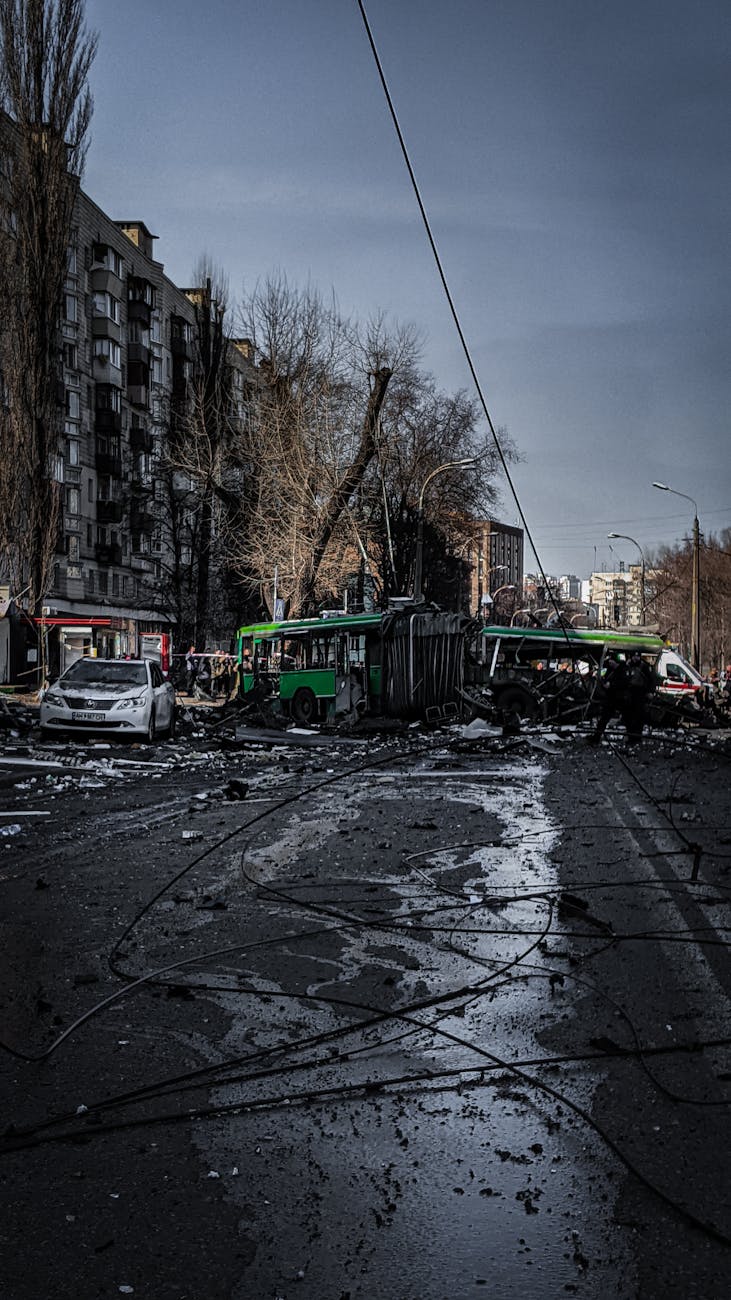In recent years, the Ukraine Situation has emerged as a focal point of international discourse, intertwining complex historical narratives with modern geopolitical stakes. To truly grasp the nuances of this ongoing conflict, one must first delve into the rich tapestry of Ukraine’s past, revealing the deep-rooted tensions that have fueled present-day strife. Moreover, understanding the roles played by various key players—both domestic and international—unlocks the intricate dynamics of the crisis. Not only does this conflict reshape the lives of those directly involved, but it also echoes across global politics and the economy, influencing decisions and alliances far beyond Eastern Europe. Join us as we explore the multifaceted dimensions of what is happening in Ukraine today.
Understanding the Historical Context of the Ukraine Situation
To comprehend the Ukraine Situation fully, it is essential to delve into the historical context that shaped the current dynamics in the region. The roots of the conflict can be traced back to Ukraine’s complex relationship with both Eastern and Western powers, particularly Russia and the European Union, alongside its own national identity development.
Ukraine gained independence from the Soviet Union in 1991, and this marked a significant turning point in its history. The newfound freedom allowed Ukrainians to craft their national identity, but it also opened up divisions between pro-Russian and pro-European sentiments among the population. Such divisions became pronounced, especially during the 2004 Orange Revolution, which was driven by widespread social discontent against electoral fraud. This event illustrated the struggle for a democratic identity, ultimately propelling more Ukrainians towards westward integration.
In 2014, the annexation of Crimea by Russia triggered a seismic shift in the region. This act of aggression not only ignited unrest in Eastern Ukraine but also highlighted the strategic significance of Ukraine as a bridge between Russia and Europe. Furthermore, the ongoing conflict in the Donbas region symbolizes the deep-seated grievances and diverging national aspirations. While many Ukrainians seek alignment with Western democratic values, a significant portion remains aligned with Russian cultural and political influences.
The Ukraine Situation cannot be fully grasped without considering the broader geopolitical landscape. The struggle for dominance between Russia—and its desire to maintain influence in former Soviet territories—and Western nations, especially following NATO’s eastward expansion, has led to an enduring confrontation. This context is crucial for understanding the multifaceted nature of the ongoing conflict, as both historical grievances and contemporary political maneuvers intertwine, creating a complex web of challenges and narratives that continue to shape the future of Ukraine.

Key Players and Their Roles in the Ongoing Conflict
In assessing the complexities of the Ukraine Situation, it is crucial to identify the key players involved in the ongoing conflict. Each party has its own interests, motivations, and strategies that shape the dynamics of the situation.
Ukraine’s Government: At the forefront is the Ukrainian government, led by President Volodymyr Zelenskyy. Since the initial spark of conflict in 2014, Ukraine has aimed to maintain its sovereignty and territorial integrity, particularly in light of Russia’s annexation of Crimea and support for separatist movements in Eastern Ukraine. The government has sought to consolidate international support and has made strides towards European integration and reforms to strengthen its military capabilities.
Russia: As the primary adversary, Russia’s role cannot be overstated. The Kremlin, under President Vladimir Putin, has pursued a strategy that involves both direct military intervention and the use of hybrid warfare, including disinformation campaigns. Russia aims to bolster its influence over Ukraine and prevent its westward alignment with NATO and the European Union. Moscow perceives this shift as a threat to its regional hegemony and has leveraged ethnic ties and historical claims to justify its actions.
Western Allies: The United States, European Union, and NATO member states have emerged as crucial players in the conflict. Collectively, they have provided military and economic support to Ukraine, emphasizing the importance of a rules-based international order. Sanctions against Russia have been implemented to deter further aggression. The U.S. has also played a pivotal role in diplomatic efforts, attempting to mediate discussions while bolstering Ukraine’s defense posture.
Separatist Regions: On the ground, the self-proclaimed republics of Donetsk and Luhansk have acted as both a battleground and a pawn in this geopolitical chess game. Backed by Russia, these regions seek autonomy from Ukraine, complicating the prospect of a peaceful resolution. Their existence has only deepened the divide within Ukraine while complicating international responses.
In summary, understanding the Ukraine Situation requires a nuanced look at each of these players, their motivations, and how their actions interact with one another. Their roles are pivotal in determining the future trajectory of the conflict and the broader implications for regional and global stability.
Impacts of the Ukraine Situation on Global Politics and Economy
The Ukraine Situation has far-reaching implications that extend beyond its borders, influencing both global politics and economic landscapes. One of the most significant effects has been the escalation of geopolitical tensions, primarily between Western nations and Russia. As countries rally in support of Ukraine, alliances are tested and reshaped. NATO, for example, has increased its military presence in Eastern Europe, which is a direct response to perceived threats from Russia. This has led to a re-evaluation of defense strategies among member states, highlighting the need for collective security in times of crisis.
Furthermore, the Ukraine Situation has generated shifts in energy policies worldwide. Europe, heavily reliant on Russian gas, has faced the immediate necessity to diversify its energy sources. This has sparked investments in alternative energy projects and a push for energy independence, affecting global energy markets. Consequently, countries that are traditionally oil and gas-dependent are accelerating their transitions towards renewable energy, thereby reshaping the global energy landscape.
Economic repercussions are also stark. Sanctions imposed on Russia have not only affected the Russian economy but have also had a cascading effect on global markets. Industries such as agriculture and finance are witnessing volatility and disruption as supply chains are affected. Moreover, inflation rates in various economies have surged due to the increased prices of food and energy, exacerbated by the conflict.
Finally, the Ukraine Situation has ignited discussions around international law and norms concerning sovereignty and territorial integrity. The legitimacy of military actions and foreign interventions is up for debate, prompting countries to reassess their foreign policies and military alignments. In summary, the implications of the Ukraine conflict are profound, offering a complex tableau of geopolitical, economic, and legal challenges that the international community must navigate.
Frequently Asked Questions
What are the main causes of the ongoing conflict in Ukraine?
The conflict in Ukraine stems from a variety of complex factors, including historical tensions between Ukraine and Russia, Ukraine’s aspirations for closer ties with Western Europe, and the strategic importance of Ukraine in the region. After the 2014 Euromaidan protests, which favored European integration, Russia annexed Crimea, heightening tensions. This action, combined with support for separatist movements in Eastern Ukraine, has led to ongoing military confrontations and geopolitical instability.
How has the international community responded to the situation in Ukraine?
The international community has largely condemned Russia’s actions in Ukraine, implementing economic sanctions against Russian individuals and entities to pressure them into adhering to international law. NATO has increased its presence in Eastern Europe as a deterrent and has provided support to Ukraine, both militarily and economically. Several countries have sent humanitarian aid and pledged assistance to help Ukrainians cope with the consequences of the conflict and rebuild the war-torn regions.
What are the humanitarian impacts of the conflict in Ukraine?
The conflict in Ukraine has created a dire humanitarian crisis, with millions of people affected. Thousands have been killed or injured, and millions have been displaced, both internally and as refugees fleeing to neighboring countries. Access to basic necessities such as food, clean water, and medical care has been severely impacted, especially in war-affected areas. Humanitarian organizations are working tirelessly to provide aid, but ongoing violence and instability pose significant challenges to delivering assistance.
